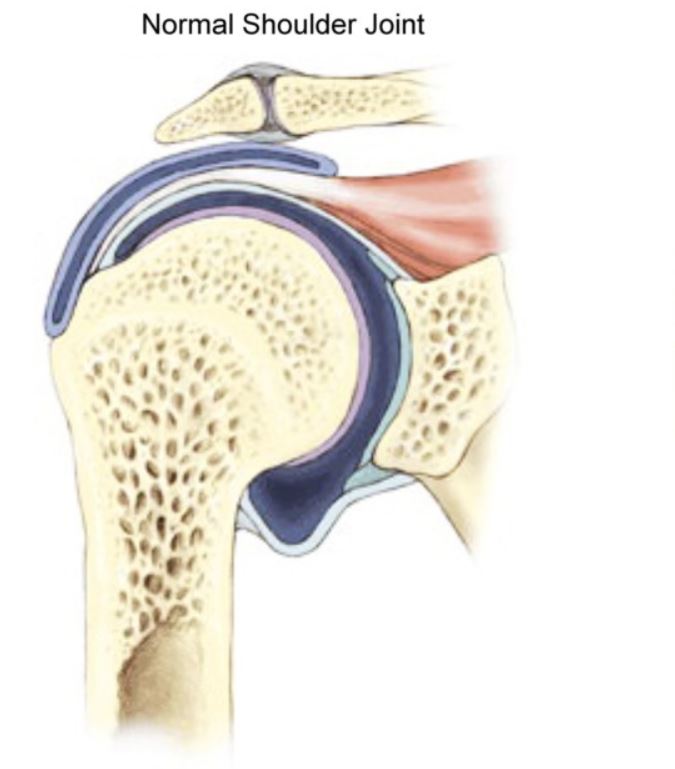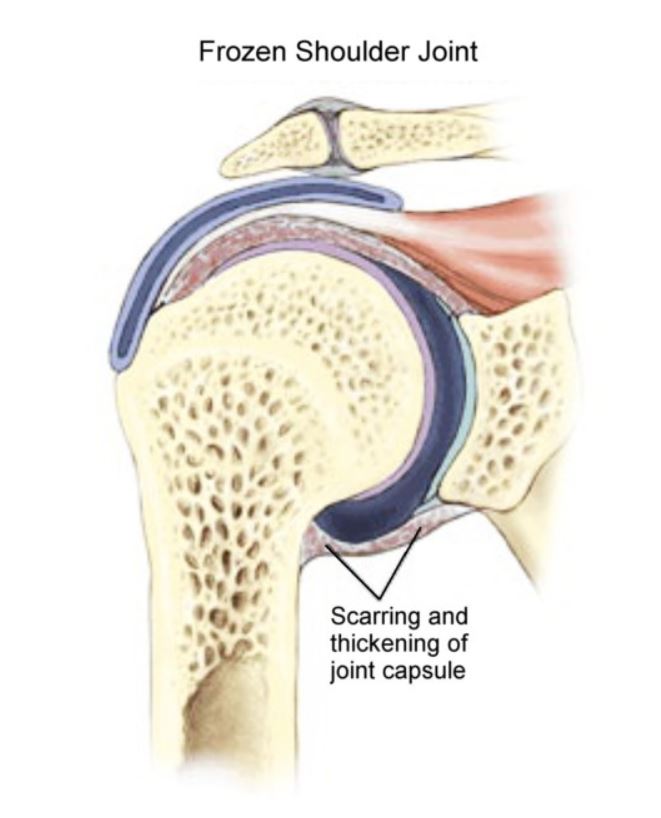Frozen Shoulder
What is a Frozen Shoulder?
A frozen shoulder is when the shoulder loses almost all of its range-of-motion. It is painful and the person loses function.
What causes a Frozen Shoulder?
When capsulitis or a tight shoulder is not caught and treated, soon enough it can lead to a frozen shoulder.
What are the symptoms of a Frozen Shoulder?
The main symptoms of a frozen shoulder are 1) shoulder pain 2) loss of range-of-motion 3) loss of function
How can you find out if you have a Frozen Shoulder?
The doctor will check for a loss of range-of-motion. X-rays are needed. Sometimes, a frozen shoulder can also be seen on MRI with a thickening of the inferior capsule (see picture).
How is the Frozen Shoulder treated?
There are four ways to treat a frozen shoulder:
1) TIME: The person may choose to ignore it and hope it goes away with time. This can happen but it may take years. Fortunately, a frozen shoulder rarely causes lasting damage to the shoulder joint so if/when the shoulder range-of-motion does return, the shoulder can be normal again.
2) THERAPY: The person may choose therapy to stretch it back to normal. Many people choose this method but only some are successful. This method requires a lot of effort over a long time and can be painful. The stretching protocol for a frozen shoulder is known as Four Quadrant Stretching.
3) MANIPULATION UNDER ANESTHESIA: The person is put under anesthesia and the doctor moves the shoulder which breaks up the adhesions. There are no cuts and the person will wake up 5 to 10 minutes later usually with a full range-of-motion.
The main disadvantage of manipulation is there is a small possibility of breaking the arm bone during the manipulation. Also, as might be expected, there is usually a significant amount of pain following the manipulation due to the tearing of the joint capsule.
4) ARTHROSCOPIC RELEASE SURGERY: The gentle cutting of the frozen shoulder adhesions using arthroscopic techniques through 2 quarter inch cuts in the skin. This 15 minute surgery has the advantage of also often providing an immediate return of range-of-motion. Its main advantages over the manipulation are: 1) there is a decreased chance of breaking the humerus 2) because the capsule is cut instead of ripped there is often less inflammation and therefore generally less pain 3) the entire inside of the shoulder can be seen through the arthroscope and can be cleaned up. Sometimes torn structures can be repaired. The main disadvantage of the surgery is the very small chance for infection.
Both the manipulation and the arthroscopic release surgery must be followed by an intense therapy stretching program for 6 to 12 weeks, known as Four Quadrant Stretching. If the therapy is not done well, the frozen shoulder will return and may even be worse than before manipulation or arthroscopic release surgery.

